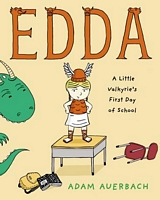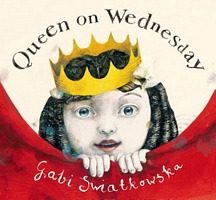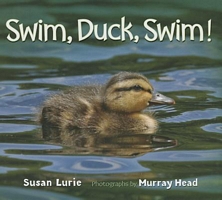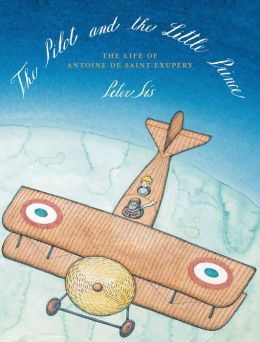
How to Wash a Wooly
Mammoth by Michelle Robinson, illustration by Kate Hindley
A little girl and a large mammoth demonstrate with words and
pictures how to wash a wooly mammoth. This is totally silly and totally
hilarious! Original artwork combines with outrageous scenarios to make a book
that any child would love, especially those who enjoy a great giggle!

The Midnight Library
by Kazuno Kohara
By the author of Ghosts
in the House, The Midnight Library
features the same simple line drawings with a limited color palette and a
simple story. In this story, a young girl is a librarian at a library only open
at night, especially for animals who love to read. Some absurd examples are the
wolf who cries over a sad story, a slow-reading turtle who is delighted to find
out that he can borrow a book so he doesn’t have to stop reading, and the band
of squirrels who are looking for good music. A story without much content, but
sure to delight the inner-librarian in all of us!

My Yiddish Vacation
by Ione Skye, illustrated by Scott Menchin
Ruth and Sammy go to their grandparents’ house in Florida
for vacation and while there, they learn and use several Yiddish words and
phrases. Menchin’s cartoony drawings show great expressions that match the mood
of the words. Although the Yiddish content may not be for everyone, the story
is told in a way that most kids will
relate to, from the trip to visit grandparents to the sibling relationships, a
great story to use when teaching about the variety of families we all are a
part of.

Oh So Brave Dragon
by David Kirk
David Kirk comes through again! An awesome book about a
brave, or not so brave, dragon. When the little dragon roars, he cannot believe
that his own roar is as loud as it is. He goes through the forest collecting
little creatures and asking if they heard the fearsome roar. Large words,
colorful pictures, expressive dragon faces all lead to the conclusion: Stick
together and all is well!
Sleep Tight, Anna
Banana by Dominique Roques, Illustrated by Alexis Dormal
Anna Banana stays awake late reading, and keeping all her
stuffed animals awake. But, when she finally turns out the light, they have
jumping contests on her bed and race around the bedroom, keeping her awake.
Finally, they all call a truce and everybody says good night. Hooray for sleepy
time. A wonderful good night book for those who want one more thing to do
before bedtime.

This book just ate my
dog by Richard Byrne
A postmodern approach to dogwalking. As Bella walks her dog
across the page, the dog disappears. Then Ben disappears as well as the dog
rescue team. For anyone who has ever wondered what goes on between the pages of
a book, this is the book for you. Only the reader can help make the dog and his
posse reappear. Read it and shake!

Star Child by
Claire A. Nivola
A small flame of a star far away from earth sees the earth
divided into water and land and longs to visit. His elders caution him because
life on earth is so very different from life on the star. “Here it is still an
peaceful, but there the colors, sensations, and sounds will wash over you
constantly,” they tell him. In spite of the cautions, the flame chooses to
become a child and experience the earth in all its motion, change, confusion and
beauty. Nivola’s illustrations are bright and varied. This book would be great
for those children who have a wonderful imagination to think like a star child
and imagine what it would be like to be transported to earth as a human baby.






















